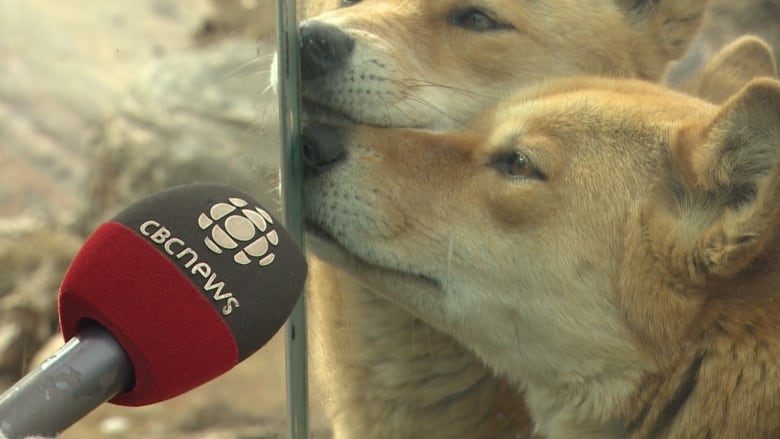Bear with me: Sask. bears are waking up to a chilly spring | CBC News
After resting throughout the whole winter, the two grizzly bears at the Saskatoon Forestry Farm Park & Zoo just recently woke up from their slumber.
But with temperatures around –9 C and a cold wind blowing through the zoo, the animals didn’t seem too keen on leaving their cozy inside area last Wednesday.
Only two boxes filled with treats and hay convinced the two grizzlies — called Koda and Mistaya — to poke their noses outside.
“I don’t think they really regret waking up,” said Jeff Mitchell, manager of the Saskatoon Forestry Farm Park and Zoo, with a laugh.
“They are a little groggy when they first get up for the first few days, but then they start to get a little more active.”
WATCH| Bears wake up from their winter ‘nap’ to a frosty spring:
We check in on the bears as they wake up from their winter “nap” to a frosty spring 2:03
Not hibernation but torpor
Instead of full hibernation, bears like the Saskatoon grizzlies go into what is called torpor, explained Mitchell.
While some bears might still wake up during that time and move around a little, Koda and Mistaya seemed to be happy staying asleep for the most part during the cold season, he added.
“We have cameras in there and we monitor them all winter long,” said Mitchell.
“The very first day Koda went outside, just stuck his head in the snow, turned around and walked back in and fell right back asleep.”

That behaviour is not dissimilar to what a bear might do in the wild, according to Philip McLoughlin, associate professor at the biology department of the University of Saskatchewan.
He has seen bears in nature poke their heads out of their dens, look around and go right back to sleep for a couple more weeks.
“There are those signals of spring that will enter into the den,” said McLoughlin.
“Some of these dens can actually get very wet inside as the snow melts.”
Another term to describe the bears’ period of rest during winter is dormancy, according to McLoughlin.
While the body temperature of some mammals during full hibernation might drop down to just above freezing, the bears’ body temperature only decreases slightly, he said.
“But they will undergo a really deep sleep,” added McLoughlin.
“We can tell that by their heart rate, which will accompany this drop in body temperature.”
LISTEN| CBC reporter Theresa Kliem finds out how bears are coping with the chilly temperatures this week:
Saskatoon Morning5:15Wake up time for the bears at the Forestry Farm
CBC reporter Theresa Kliem met with Saskatoon Forestry Farm Park and Zoo manager Jeff Mitchell to find out how the two bears are coping with the chilly temperatures this week. 5:15
Wild black bears also waking up
After five months of resting, the two zoo animals lost between 50 and 75 kilograms each, said Mitchell.
Now they slowly start to regain some of their weight to get ready for the next winter.
Like bears in the wild, Koda and Mistaya didn’t need an alarm clock to wake up this spring.
“They tell us when they’re ready to bed down for the winter,” said Mitchell.
“And they tell us when they’re ready to come back out.”
The two grizzlies are not the only bears in the province that are now waking up.
Black bears in Saskatchewan are waking up “a little bit later the further north that you get,” said McLoughlin.
“But most of the bears are up starting now, the males first and then followed by the females and their cubs.”
Black bears are quite common in Saskatchewan, especially in the northern part of the province. The females give birth to their young in the dens while they rest, explained McLoughlin.
The mothers and their cubs then have a short but intense active season during which they need to pack on all the weight they need to get through the next winter, he added.

While not actual brothers, the former orphaned cubs Koda and Mistaya have been together for about 15 years, moving to their home at the Saskatoon Forestry Farm Park & Zoo in 2008.
Like human siblings, the two usually get along, but they also fight.
Sharing food with his brother is not always one of Koda’s favourite things, particularly when Mistaya tries to steal Koda’s treats right under his nose.
“Mistaya always wins when it comes to food,” said Mitchell. “There’s no question about that.”

For all the latest Technology News Click Here
For the latest news and updates, follow us on Google News.


